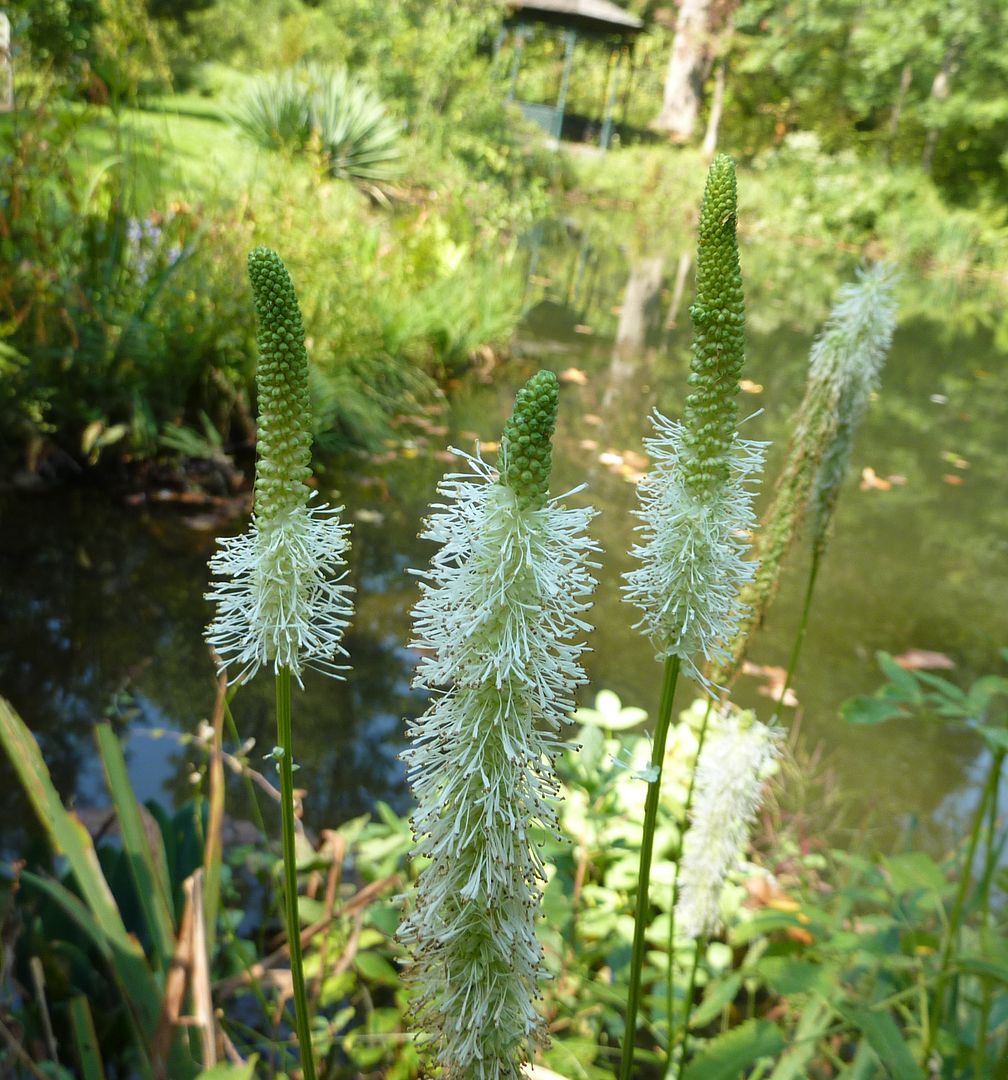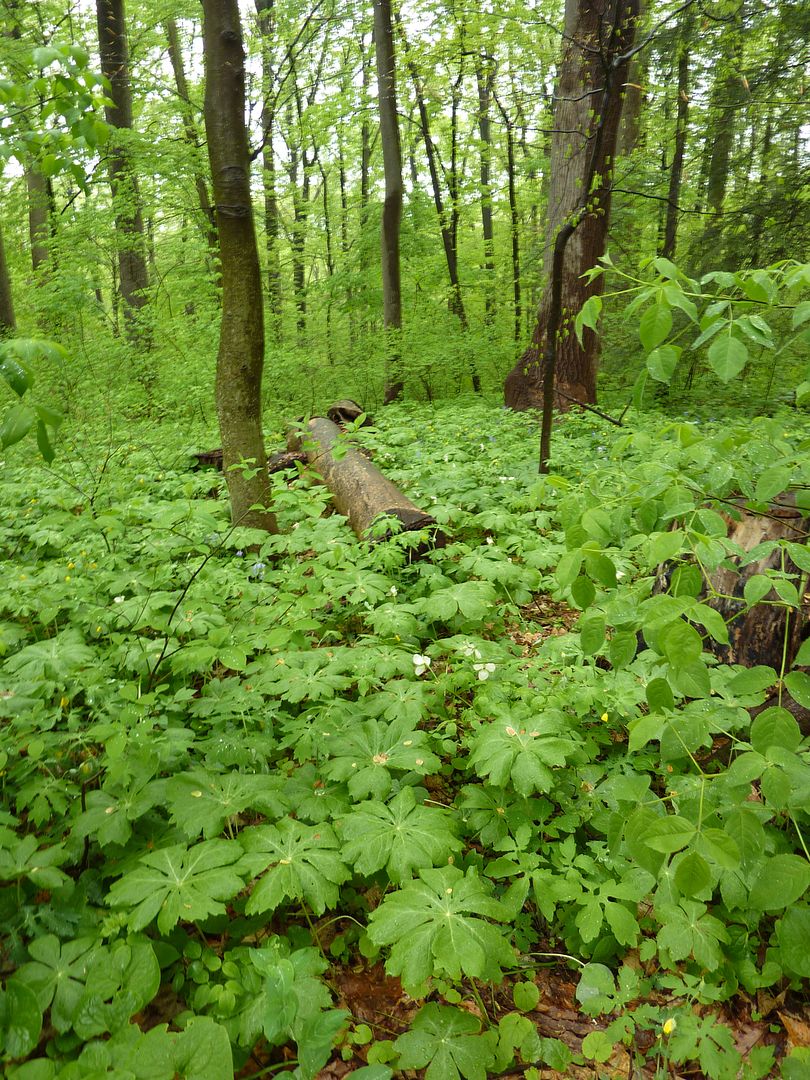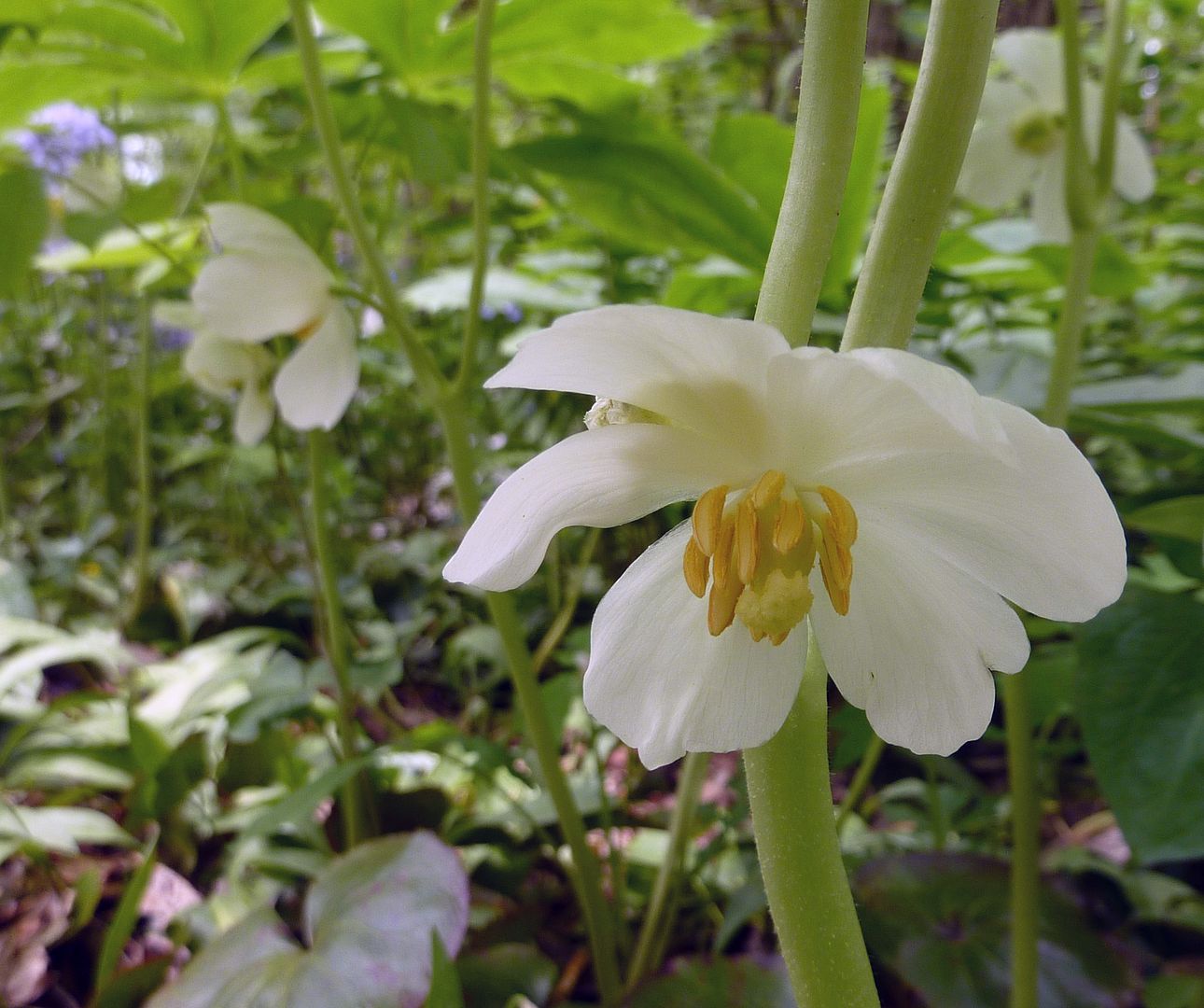This is a continuation of the former list. I don't personally grow these, and many I've never seen in person but I hear good things.
More Native Plants Bees Might Love
Culver's Root, Veronicastrum virginicum. I'll eventually be adding this to my garden at some point. The google image search looks promising, but I see way more bumblebees than honeybees. Not that that's a bad thing it would just be nice to increase honey yields along with helping out nature.
Assuming Culver's Root is a hit with honeybees then maybe other natives with similar flower shapes would also work. For example, Lead Plant, Amorpha canescens, and relatives. These are more colorful looking, and one species around me is actually a tree. I have one or two of the herbaceous perennial species growing in dry partial shade but they have yet to produce flowers for the two year's I've had them. Considering what a nice color combination the flowers are I'm really hoping these work out. These are long lived perennials with a woody sage-like form.
American Burnet, Sanguisorba canadensis, is another one I hope to add to the garden. It's by no means a very common plant, but Prairie Moon Nursery praises it and offers pictures of honeybees working this plant, and that's good enough for me to recommend it. I've seen it in person and was frankly underwhelmed.
Buttonbush, Cephalanthus occidentalis. To this day my jaw still drops at how no one grows this plant. It's basically our native version of a Butterfly Bush, who's seeds are eaten by birds, and gets every bit of butterfly attention. The flowers are lightly scented. They can grow in up to 4' of water but tolerate growing in normal garden soil just fine. As with Joe Pye Weed, these get assorted bees and butterflies. Why isn't this grown in more nurseries? It seems to be it's just a matter of the public not knowing about the plant. My heart skipped a beat when I saw them on sale at Popes' Gardens here in NJ because I've always had to special order this plant. I made the owner thrilled with I bought one from her as she said they rarely sell any of their stock. I'm so happy with the first one I may go back and buy another this year. She said they almost always sell out of butterfly bushes but rarely does anyone ask for a buttonbush.
Sensitive Brier, Schrankia sp. Okay for this play you'll need to do a google image search so everyone knows what I'm talking about. These used to be in the genus Mimosa, however they were put in their own genus I believe because they're all thorn covered vines that get 5' long at most. The flowers are amazingly showy, especially considering there isn't a garden center in the country that sells the thing. How did this amazing little puff ball escape the eyes of the horticultural industry? Granted it's covered in thorns, but you're almost encouraged to touch the plant as the leaves will actually move in response! Honeybees love them all too, I've seen pictures of these plants covered in them.
Prickly Pear, Opuntia sp. I know a number of beekeepers who have these on their property. Even here in NJ there are indigenous cacti. Opuntia humifusa is our native species but there are lots of these scattered about the country. See USDA. Each year they produce several massive flowers. In nature they typically form a sort of ground cover around a pine tree here in the Pine Barrens. Despite having needles as a defense, they don't hold up to foot traffic, though it's discouraged.
Corn is another great plant for honeybees. Officially Corn is wind pollinated and needs no bee activity to produce a crop. The pollen anthers are so robust with pollen though that bees simply can't resist stocking up on it. Pollen is fed directly to brood and only effects honey yields in the secondary effect of producing more bees. Some sunflowers have this effect as well but I'd say neither are really important.
Spring Ephemerals?
For those of you reading my blog and perhaps others like it, you may have noted that there's an abundance of spring ephemerals that all bloom early in the year. As mentioned in part 1, there's to much blooming up in the tree line to get honeybee attention. There is of course the occasional scout or forager who's found something good but not good enough to tell the others. Despite the abundance of spring time flowers honeybees really don't go for spring ephemerals. Perhaps there is a flaw with the waggle dance. They can tell other bees where the sun is, how many degrees to the left or right, and even how far they should fly but what they can't tell them is the height. Honeybees typically take off from the nest and reach a flying altitude of about 30' off the ground, maybe higher. This puts them at eye level with the trees!
Another reason is that many spring ephemerals really don't want bees pollinating them.
May Apples have big umbrella like leaves that create a thick canapé, blocking out sight of the forest above. This also traps humidity and encourages insect activity down below. Their flowers are hidden down and out of sight where few bees are likely to venture. Beetles are the pollinator of choice as they emerge from the leaf litter these big flowers are pretty much all they can see.
Others such as Trilliums look more promising as at least a few of those species hold their flower high and proud. Even so, a lot will still produce a fowl odor to attract flies and beetles to their flowers over bees. I've seen honeybees visit Trillium grandiflorum but it seemed more of a flook day to me.
Those that want honeybee attention are more likely to have lots of flowers. So anything monofloral is out. The logic here is that a lot of monofloral plants are simply producing a flower as option 2 to their reproduction. Often a Trillium will spread more readily by expanding it's rhizome and produce more shoots next year. The result is a clump of the same plant slowly dividing underground. When pollination does occur often the seeds are transplanted by ants elsewhere to start a new clump.
Jacob's Ladder, Polemonium caeruleum, I'm told might be a noteworthy plant. If true, this might be my new favorite plant to put everywhere. They are drought tolerant, grow in full sun, to full shade, and have an almost fern-like appearance which most people will appreciate. I have a few of these in my prairie garden, the idea being they'd come up and flower in the spring and hopefully not mind getting shaded out some by everything else as summer rolls in. I bought the straight species which has nice forest green foliage, and who's flowers start out white then turn a lavender-blue color before fading. There are a number of cultivars of this plant available.
Phacilia is another note worthy option. Locally these are sold in seed packets as annuals but there are a number of perennial species too. P. bipinnatifida is one I'd like to try but I haven't found anyone selling it as of yet.
Food Crops
Not a native plant buff? Good news! Just about every food crop or herb in the common garden will flower and get the attention of bees. And the pest part is, Tomatoes, some Blackberries, Raspberries, and Strawberries all have native counterparts. Sadly there are so many cultivars, varieties, and hybrids floating around that caring about what the species is almost impractical. Assuming you're growing these as a food source though, I don't think it should matter as much. That said some of these food crops and herbs are sketchy in my mind.
Borage. This is a plant I recommend to anyone who says annuals are a waste of money. This plant is flowering by week 6 and seeding by week 8 after germination. These seeds germinate 2 weeks later and continue prolifically to flower and set seed well into the winter, where seedlings go dormant until next spring! Bees love the flowers, but calling this plant a crop is questionable. You can eat the flowers but what's the point of growing it then? You can eat the tender new growth as a salad green but the entire plant is covered in spiky hairs. Proper boiling and blanching is required.
Broccoli and other Salad Greens are pollinated by Honeybees and lots of other things for that matter. So these are good but growing these plants for the flowers isn't the point of the crop. Maybe just let a few bolt, as it's called, and collect some seed.
Thyme, Basil, Rosmary and Sage Just about every other herb there is, are excellent for hoenybees.
Lavender is one of the best in my opinion, however it rarely grows this well here in the US. I believe adding sand to the soil helps out with this. Mulching can help too but really I've never tied this in person.
I could probably talk more on this at a later date but for the most part those are all the plants I can recommend off the top of my head. Hope these help someone out there.


